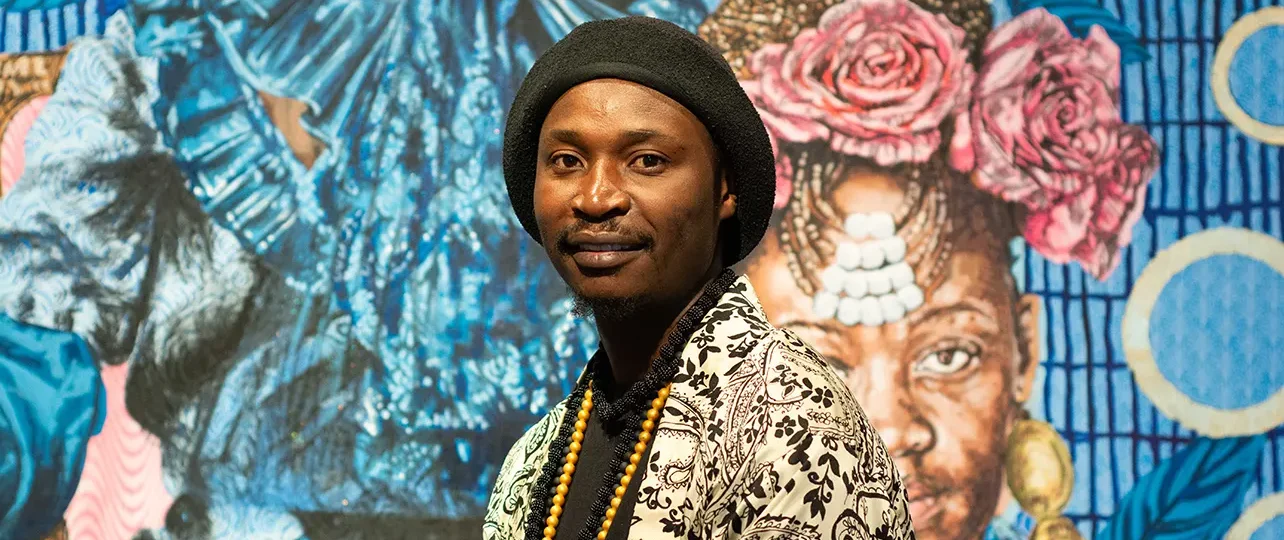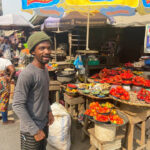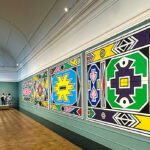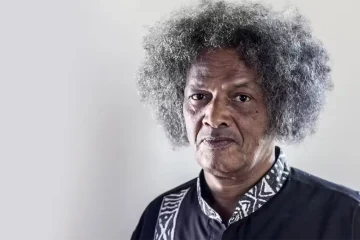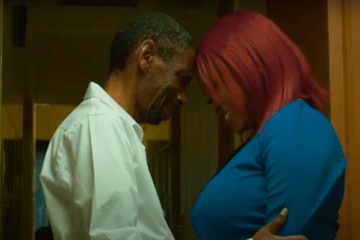INSPIRED by his single mother, who raised three children while working as a domestic worker, visual artist Bambo Sibiya has framed her as a superhero for his solo exhibition, “Ngemva Kokuqubuka – After Precarity.”
Sibiya’s exhibition, currently showing at Circa Gallery in Johannesburg from June 1 to July 27, is an ode to the beauty, dignity, and strength of everyday women, representing them in a regal manner and challenging societal constructs of power and status. The exhibition includes deconstructed garments as part of the overall showcase, adding a tangible dimension to the visual narrative.
Before crafting the artwork, Sibiya designed the garments worn by his muses in collaboration with fashion designer Nina Sedumedi. Starting with his mother’s domestic uniform, he transformed it into a luxurious Victorian garment, bringing to life his childhood image of her as a superhero.
Utilising his printmaking skills, the garments feature explosive visual motifs of colour, pattern, and texture. Sibiya meticulously crafted and styled his muses’ hair to convey cultural pride and empowerment. His mother, a central figure in the work, perceives herself as empowered, glorified, and appreciated.
In addition to his mother, this collection celebrates women from his community. The women sense their importance in being immortalised in a body of work of cultural relevance.
“Each painting you see depicts a real person from my surroundings. They come from KwaThema, where I was born and grew up. They are my neighbours, friends, colleagues, and people I went to school with,” he said.
This exhibition provides a refreshing alternative to the prevalent media narratives of struggle often associated with black communities.
Weary of the visual representations of women on the internet and social media, Sibiya sought to portray ordinary women with the inherent worthiness he sees in them.
“It was important to present our women the way I visualise them, to give them the dignity and power I see in them, to elevate them, and to look up to them,” he explained.
Sibiya worked alongside curator Nkhensani Mkhari, who was responsible for creating an index and deciphering the gestures, motifs, and icons to make the message of the body of work more comprehensible. Additionally, he collaborated with art curator Nkuli Nhleko, who handled the composition and design of the show.
“My methodology and approach consisted of extended conversation and research using the cornucopia of ideas embedded in his work to come up with a robust curatorial framework in preparation for the exhibition which could act as a map for the public and constituents engaging with his work,” Mkhari explained.
This desire to elevate everyday women extends to the African philosophy of ubuntu inherent in Sibiya’s work – “I am because we are” – emphasising communal ethos and humanity towards others.
His journey as an artist started as a calling driven by a deep passion for visual storytelling. His artistic approach seamlessly blends the precision of traditional printmaking with the expressive qualities of acrylic and charcoal on canvas.
Sharing this process, Sibiya noted that although he enjoys exploration and experimentation, a body of work always starts with the idea he wants to convey. After jotting down the idea, he sketches the paintings and decides on the subjects.
“Then I stage everything, like a theatre performance. I get the models on stage and to pose in a specific way. Sometimes it’s like recreating a historical moment or something from the past, anything that I’ve come across and am now visually bringing back to life. We stage and take images, then I break it down again, looking at what patterns will work and what these patterns are saying, what kind of background will align with the actual image. By the time I start painting, it’s been days of building up the vision in my mind and writing down ideas.”
Mkhari expanded on the artist’s visual representation of women.
“Sibiya portrays women in a classical style. The gestural syntax, the poses, and the setting are fundamentally classical. However, the characters in the paintings are not. In the 18th and 19th centuries, portraits of Black women were rare and often laden with stereotypes or symbolic connotations—frequently in marginal roles or as exoticized figures. This reflected colonial attitudes and the European fascination with the ‘exotic.’ Paintings such as Édouard Manet’s ‘Olympia’ (1863) included Black women as secondary characters, often serving white subjects, which mirrored societal hierarchies.”
Alongside the Victorian-style dress, the work taps into the rich history and culture of South African jazz, while also drawing from the everyday lived experiences of his subjects. Although some of Sibiya’s previous work has centred on women, this collection, in his view, veers away from a serious political stance.
Comparing it to his first professional exhibition, “Intsaka Umcile Wesidwaba,” which was a political commentary about the daily challenges women face, he noted, “with the current exhibition, it’s a celebration of women, it’s a celebration of beauty. It’s just appreciating what we have. It’s more colourful, it’s vibrant, it’s South African, it’s beautiful. It’s different. I’m not trying to fight anything. I’m just celebrating beautiful South African women.”
Sibiya is part of a wave of South African artists who continue to thrive in the local art scene that has remained robust even post-pandemic.
“Ngemva Kokuqubuka – After Precarity” stands as a significant milestone for him, marking his return to exhibiting on home ground several years after showcasing in galleries and museums around the world such as Fabien Fryns Fine Art, Dubai, 2022 and Black Wall Street gallery, New York, 2023.
In a broader context, Sibiya’s exhibition occurs at a time marking Africa’s largest-ever participation in the Venice Biennale—recognized as a world leader in contemporary art exhibitions—with 13 countries, including South Africa, hosting national pavilions, an increase from nine in 2022.
The show serves not only as a celebration of the beauty, dignity, and strength of everyday women but also as a testament to Sibiya’s deep-rooted connection to his community and heritage. Despite the political undertones inherent in the work, the artist emphasises celebration, hoping that those who encounter it experience the joy and light-heartedness he felt while creating it.
Through the fusion of traditional printmaking techniques with vibrant, expressive visuals and deconstructed garments, Sibiya’s work pays homage to the past while embracing the present, making a profound statement in contemporary South African art.

